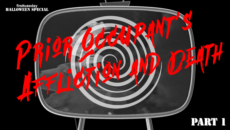This article discusses the negotiation, preparation and execution of the release of a judgment lien encumbrance.
Negotiate a release of recorded instrument
An investor enters into an equity purchase (EP) agreement to buy a seller’s residence that is in foreclosure. [See first tuesday Form 156]
On expiration of the mandated five-day cancellation period, escrow is opened and a preliminary title report is obtained. The investor then discovers an abstract of a money judgment has been recorded against the residence, called a judgment creditor ‘s lien.
However, the purchase agreement does not call for the investor to take title subject to the recorded judgment lien.
Further, title companies will not write a policy of title insurance without referencing the creditor’s lien as excluded from coverage and thus affecting title.
The seller-in-foreclosure is uninformed about lien avoidance. Thus, the investor takes control by contacting the lienholder to negotiate the release of the lien and close the purchase transaction.
The lienholder initially demands full payment of the debt – the very reason he recorded his lien.
However, the investor has economic leverage when negotiating a release of the lien due to the priority of both the trust deed loan under foreclosure and the homeowner’s homestead exemption.
The trustee’s foreclosure sale will wipe out the judgment lien. Also, a recorded declaration of homestead or attachment exemptions protect up to $150,000 of a homeowner’s equity before the judgment lien attaches. [Calif. Code of Civil Procedure §§704.710 et seq.]
The abstract lien
A valid lien is created by a judgment creditor by recording an abstract of judgment. [CCP §697.310(a)]
Unless the money judgment is satisfied or released, a judgment lien continues for 10 years from the date it was recorded. [CCP §697.310(b)]
However, the recording of a judgment obtained from a federal court attaches without the recording of an abstract of judgment.
For example, a judgment creditor obtains a federal district court judgment and records a certified copy of the judgment in the county where the debtor is vested as the owner of real estate.
The owner later obtains a loan secured by a trust deed on the property.
The owner files a bankruptcy petition and the lender claims the recorded federal judgment is not a valid lien since it is not an abstract of judgment. Thus, the lender’s trust deed has priority and is the senior lien.
The judgment creditor claims he holds a valid lien on the property senior to the lender’s trust deed since under California law, a valid judgment lien is created on the recordation of a certified copy of a federal judgment.
Does the judgment creditor hold a valid lien senior to the lender’s trust deed?
Yes! The judgment creditor holds a valid lien senior to the lender’s trust deed since California law states a federal judgment creditor creates a valid lien on recordation of a certified copy of the federal judgment. [In re McDonell (9th Cir. BAP 1996) 204 BR 976]
A money judgment from a court of the United States which is enforceable in California becomes a valid lien on real estate on the recording of:
- an abstract of judgment; or
- a certified copy of the money judgment. [CCP §697.060]
The wiped-out lien
Generally, a good bargaining tactic to obtain a release of a lien which clouds title to a property is a combination of:
- a “gentle reminder” that the judgment lien is on the verge of being wiped out in foreclosure;
- a review of the homeowner’s homestead exemption rights as having priority over the creditor’s lien; and
- an offer to pay a lesser amount, credited against the amount the owner owes the lienholder.
The objective of the negotiations is to give the lienholder an incentive to cooperate and release the property from the lien.
A winning situation is created when:
- the lienholder collects a portion of the money owed on the money judgment which is not enforceable against the property if a foreclosure wipes out the judgment lien;
- the seller continues with his distress sale, avoiding the elimination of his equity by the lender’s foreclosure, and keeps the net sales proceeds, which are protected by his homestead exemption, intact for later investment in a replacement residence; and
- the investor keeps his purchase agreement alive by negotiating a relatively small payment, which is paid out of the seller’s proceeds and does not increase the purchase price, to the lienholder.
Release of recorded instrument
When the judgment lienholder agrees to release the property, the seller must obtain and record a release of recorded instrument from the lienholder. [See Form 409 accompanying this article]
The release contains all the information necessary to inform the record that the judgment lien remains of record against the homeowner, but the residence is now released.
Once notarized and recorded, the cloud of the judgment lien against the property is extinguished and a policy of title insurance can be issued free of the lien.
The lienholder unilaterally executes the release by signing it and dating his signature.
Also, the release must be notarized to be recorded – it is recordation which clears the seller’s title of the lien. [Calif. Government Code §27287]



















Basic information on Abstract of Judgment is okay, but subject to many exceptions. An Abstract recorded prior to a Deed of Trust takes priority. An Abstract based on Fraud of the Judgment Debtor can wipe out the Homestead Exemption. Once recorded the Abstract, and executed on there is no redemption period.
Title transfer to Judgment Creditor requires a Sheriff Sale or Post-Judgment Settlement agreement, but the sale is similar to a Foreclosure sale process.